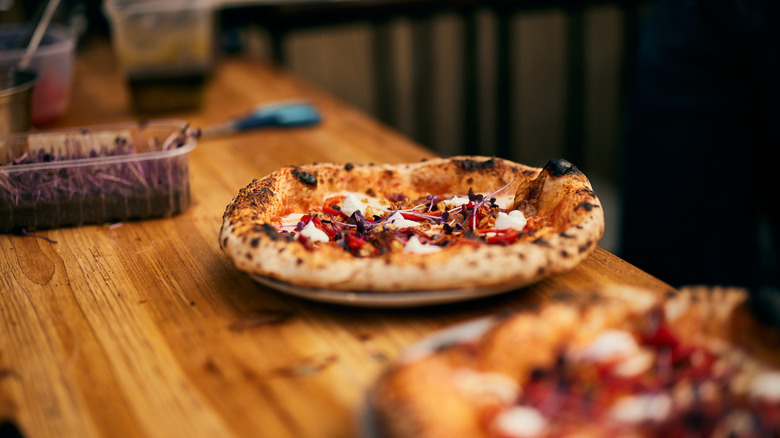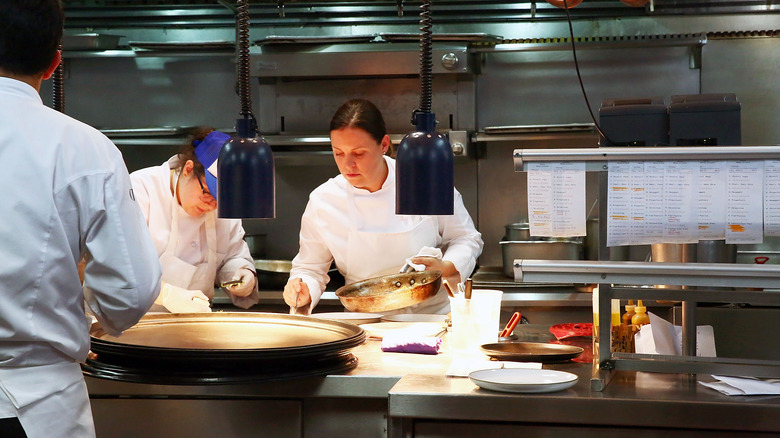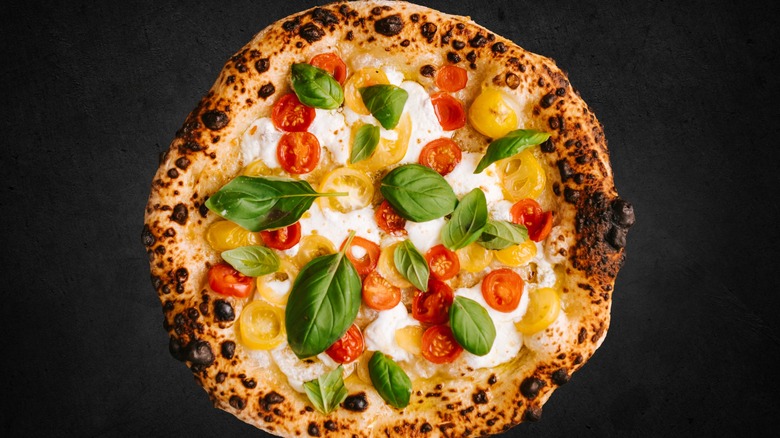The Extra Step To Make Your Pizza Toppings Truly Stand Out
Among pizza lovers, there is a long-standing debate. Is it best to enjoy a slice in its purest form, with only sauce and cheese? Or is pizza at its best when used as a platform for all kinds of delicious toppings? Arguments abound for both sides, but those in the toppings camp have a lot to consider. For one thing, there are almost no rules when it comes to what you put on top of your pizza.
One reputable pie authority based in arguably one of the best pizza cities in the world — New York — has some advice. Chef Melissa Rodriguez, of Mel's Wood-Fired Pizzeria in the Chelsea neighborhood, explains that the best way to get the most out of your toppings is to abide by a time honored principle: "Less is more," Rodriguez said on the subject.
Rodriguez also points out that some toppings are best when added at different times, and that can mean even layered on after the cooking process is complete. "I love to finish with all sorts of things depending on the flavor profile," Rodriguez said. "A fresh squeeze of lemon, a super grassy drizzle of Sicilian [extra virgin olive oil], a fresh grating of parmesan, a fresh herb," she added. This extra step helps bring out the best in both the cooked toppings and finishing ingredients. With this tip in mind, grab your simple classic pizza dough recipe, and begin your topping brainstorm.
Implementing this topping tip
Some elements, like fresh herbs, bring brightness to your pizza's profile, but will lose their potency when exposed to too much heat. Olive oil and finely grated cheese add taste and texture to finished slices, while lemon's acidity can boost the flavor of your chosen toppings when squeezed just before serving. "Some things just shine better if they are not cooked and help in making the cooked ingredients shine," said Chef Melissa Rodriguez.
The "less is more" strategy Rodriguez recommends means applying a moderated selection of toppings equally across the surface of your pizza — which is effective in more than one way. Not only do you get that consistent satisfaction in each bite, but you'll have a more even cook across the pie. If you pile up or overcrowd toppings, the heat from your oven won't be able to reach that piece of broccoli or slice of pepperoni that's buried beneath another ingredient.
"I try to distribute ingredients so you'll enjoy all of them in each bite," she added, explaining that a lighter topping selection means you can spread the good stuff evenly across each slice; exercising a little restraint allows each of your ingredients enough space to stand out.
Selecting topping combinations
When strategizing your pizza toppings, a great source of inspiration is the menu at Chef Melissa Rodriguez's New York restaurant, Mel's Wood-Fired Pizzeria. There, you'll find her philosophy put into practice with pies like the pepperoni pie with Castelvetrano olives and Calabrian chilis, or the guanciale pie with peppers, tomatoes, and shallots.
Leaning into the less is more mantra is especially helpful at home, where most cooks don't have a deep walk-in fridge full of ingredients like a restaurant. Instead, simply follow this guidance and select a few available elements that complement one another. A honey-pear pizza is satisfyingly sweet and savory, with a brief ingredient list that features gouda and garlic along with those hero ingredients. This curated selection of toppings makes it super simple to spread them out, ensuring that each bite will deliver on the namesake's promise.
A good example of finishing your creation with more delicate ingredients is an arugula and pancetta pizza, which calls for topping your pie with a drizzle of balsamic glaze and arugula that's been lightly tossed with olive oil, salt and pepper. No matter what combinations you choose, if you're team topping, you can't go wrong by taking this professional pizza advice.


